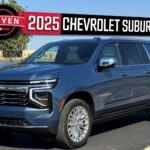Driving the Ford Mustang Mach-E for a week provided insightful experiences, particularly with its advanced driver-assistance features and the practicality of its charging network. The adaptive cruise control stood out immediately, proving to be exceptionally useful during highway driving. The intuitive thumb switches on the steering wheel made adjusting settings, especially the distance to the car ahead, effortless. Combined with the one-pedal driving mode, the Mach-E transformed into a surprisingly relaxing and easy vehicle to navigate through traffic, highlighting its potential as an excellent daily commuter.
To further test the Mach-E’s capabilities, a trip to Lake Tahoe, approximately 200 miles away, was planned. This journey served as a practical assessment of the public charging infrastructure, especially considering the absence of home or destination charging. While the Mach-E includes a Ford Mobile Charger compatible with standard 120-volt outlets, its slow charging rate of about 3 miles per hour made DC Fast Charging stations the only viable option for this trip.
Alt text: Ford Mustang Mach-E electric SUV being charged at a public EVgo fast charging station, showcasing its charging port and the EVgo charger interface.
Northern California boasts a fairly robust and rapidly growing charging network, with key players like EVgo, Chargepoint, and Electrify America. Finding these charging stations is straightforward, thanks to the FordPass App which pinpoints their locations and helps alleviate concerns about range. Prior to the Tahoe trip, a stop at an EVgo station in Mill Valley encountered initial connection issues, resolved with assistance from EVgo support, who kindly offered a complimentary charge. Generally, the charging process is user-friendly. Drivers can utilize the FordPass App or individual apps from charging providers like EVgo, Chargepoint, and Electrify America to locate and check the availability of nearby charging stations. These stations are often conveniently situated in shopping centers or hotel parking areas.
A typical 20 to 40-minute session at a DC fast charger can replenish the battery to approximately 60-80%. It’s worth noting that charging speeds decrease as the battery level approaches 80%, and achieving a full charge can take up to a couple of hours. Therefore, longer road trips in the Mach-E necessitate some pre-planning and patience for 20-30 minute charging stops to maintain battery levels and synchronize driving with necessary breaks. This experience underscores that while electric vehicle road trips require a slightly different approach compared to gasoline cars, the infrastructure is increasingly supportive and user-accessible.
